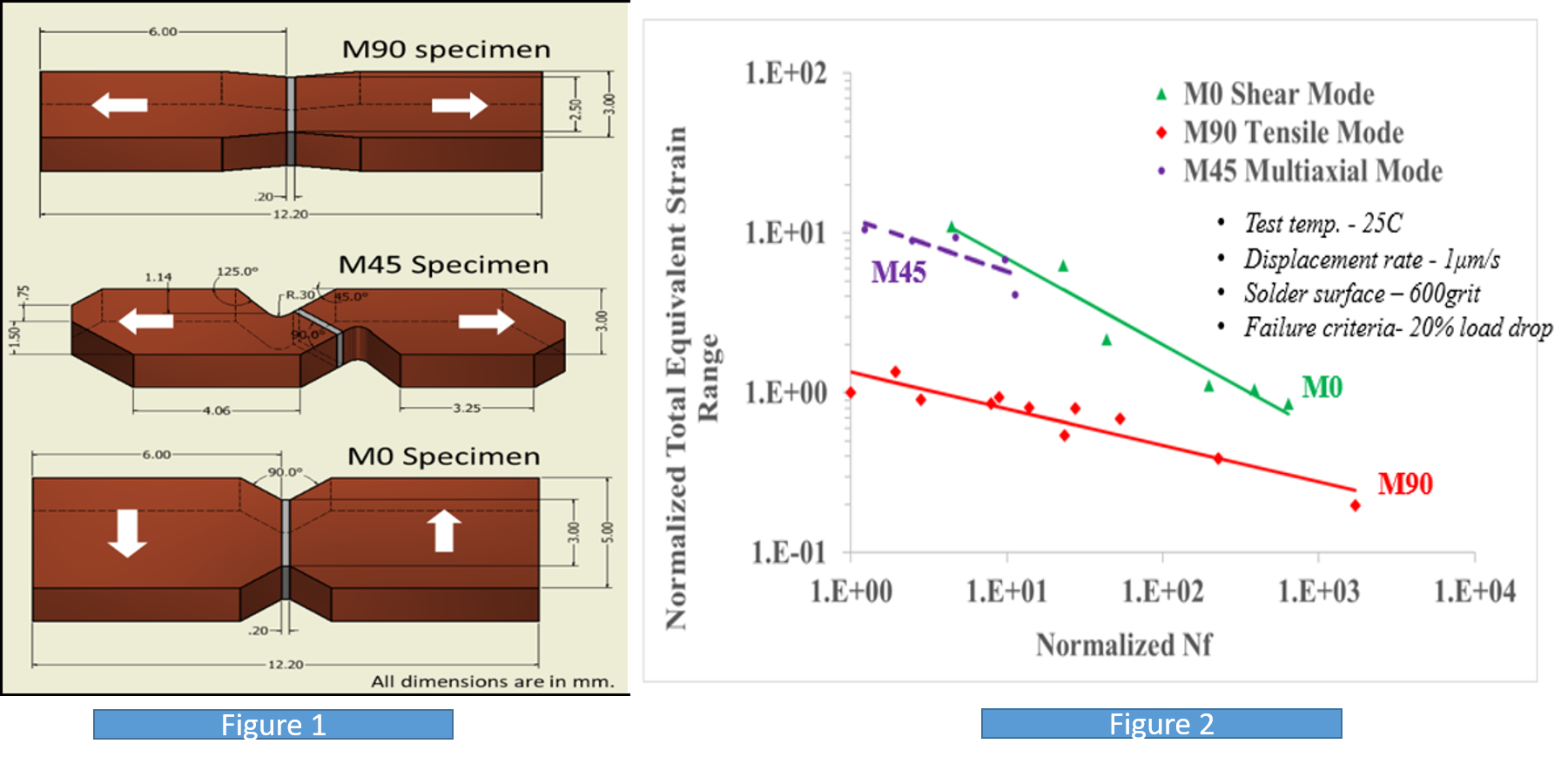 Circuit cards in real world warp, stretch or bend as they undergo thermal cycling and/or mechanical loading. This causes the solder joints to experience cyclic multiaxial stresses thereby adversely affecting its reliability due to cyclic fatigue degradation. To understand the mechanical fatigue behavior, researchers typically look at uniaxial behavior in the lab, using either tensile loading or shear. Our study shows that the fatigue durability can be very different, depending on which of these two loading modes we use. In other words, in service applications, multiaxial fatigue cannot be predicted from fatigue tests that use a single uniaxial stress state.
Circuit cards in real world warp, stretch or bend as they undergo thermal cycling and/or mechanical loading. This causes the solder joints to experience cyclic multiaxial stresses thereby adversely affecting its reliability due to cyclic fatigue degradation. To understand the mechanical fatigue behavior, researchers typically look at uniaxial behavior in the lab, using either tensile loading or shear. Our study shows that the fatigue durability can be very different, depending on which of these two loading modes we use. In other words, in service applications, multiaxial fatigue cannot be predicted from fatigue tests that use a single uniaxial stress state.
Room temperature cyclic fatigue tests were conducted using tensile (M90), shear (M0) and multi-axial (M45) loading conditions (specimens are shown in Figure 1). Interestingly, the test results (shown in Figure 2) differed in following way-
- Cyclic fatigue durability is least under uniaxial tensile loading and slowly increases as the stress state transitions towards pure uniaxial shear.
- Differences in fatigue curves point towards differences in failure mechanisms.
This study is important because it shows that engineers cannot accurately estimate the reliability of solder joints by only looking at uniaxial test data or from failure models generated from uniaxial test data, since solder joints in the field experience far more complex stress states. Further details about
the specimens, experimental work and failure analysis can be found in ‘Fatigue Life of Joint-Scale SAC305 Solder Specimens in Tensile and Shear Mode’ and ‘Effect of Stress State on Fatigue Characterization of SAC305 Solder Joints’.
For more information Fatigue Failure in Soldier Joints please contact Prof. Abhijit Dasgupta.
Top